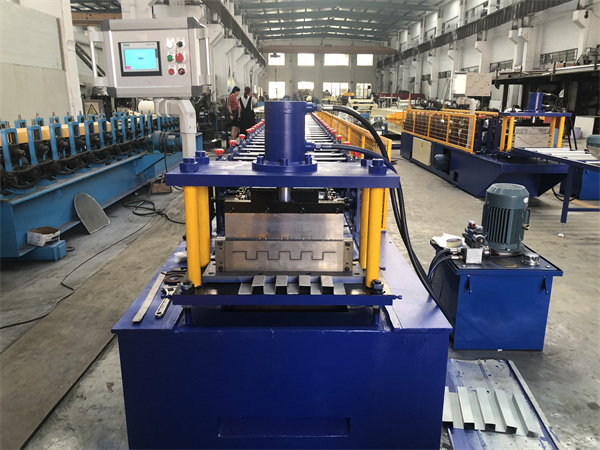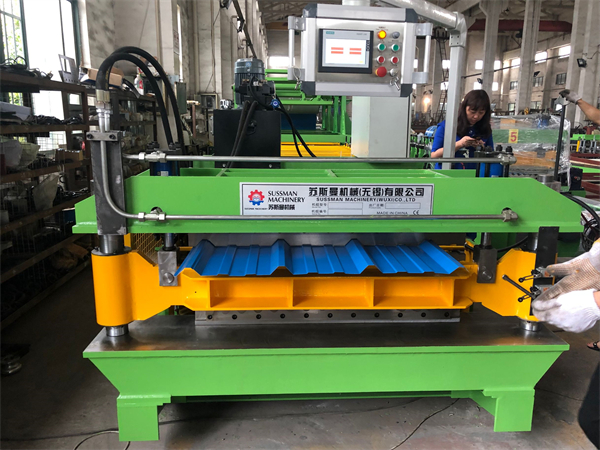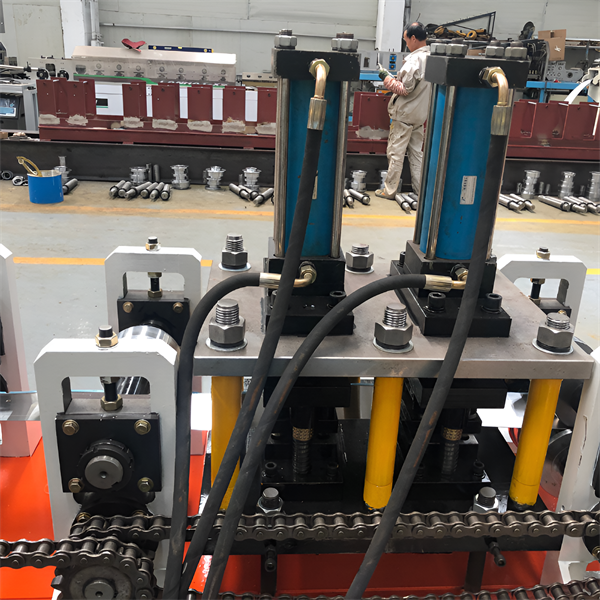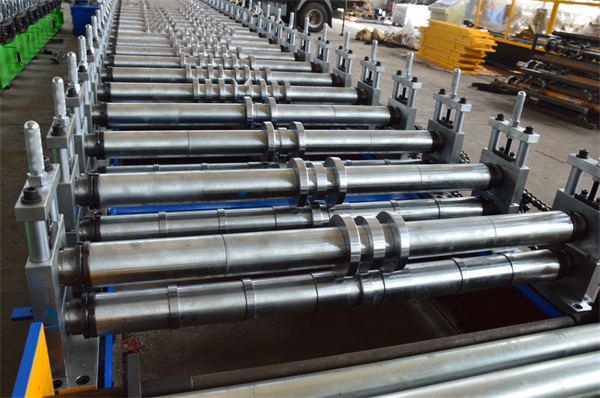1. Introduction
The construction industry relies heavily on efficient and precise manufacturing processes to produce high-quality building materials. One such process involves the use of roll forming machines, which are designed to shape metal sheets into desired profiles. In this article, we will explore the world of IBR roll forming machines, their functionalities, benefits, applications, maintenance, and more.
2. What is an IBR Roll Forming Machine?
2.1 Understanding IBR Profiles
Before diving into the details of an IBR roll forming machine, let’s first understand what IBR profiles are. IBR stands for “Inverted Box Rib,” and it refers to a popular roofing and cladding profile used in the construction industry. IBR profiles are characterized by their trapezoidal shape with alternating ridges and valleys.
2.2 Definition of an IBR Roll Forming Machine
An IBR roll forming machine is a specialized equipment used to fabricate IBR profiles from flat metal sheets. It employs a continuous process of feeding the metal sheet into the machine, where it undergoes a series of bending, shaping, and cutting operations to achieve the desired IBR profile. The machine’s precision and versatility allow for the production of consistent and accurate IBR profiles at high volumes.

3. How Does an IBR Roll Forming Machine Work?
3.1 Step 1: Material Feeding
The process begins with the operator loading a flat metal sheet into the roll forming machine. The machine is equipped with a material feeding system that ensures a smooth and continuous flow of the metal sheet.
3.2 Step 2: Roll Forming
Once the material is fed into the machine, it passes through a series of rollers that gradually shape it into the desired IBR profile. Each roller set is carefully designed to bend the metal sheet at specific angles, forming the ridges and valleys of the IBR profile.
3.3 Step 3: Cutting and Shearing
After the roll forming process is complete, the machine employs cutting and shearing mechanisms to trim the IBR profiles to the desired length. These mechanisms can be adjusted to accommodate different profile dimensions.
3.4 Step 4: Stacking and Packaging
The final step involves stacking and packaging the finished IBR profiles. Depending on the machine’s capabilities, it can automatically stack the profiles in neat bundles or integrate packaging systems for further protection during transportation.

4. Advantages of Using an IBR Roll Forming Machine
- High Efficiency: IBR roll forming machines can produce IBR profiles at a rapid pace, significantly reducing manufacturing time and increasing productivity.
- Precision and Consistency: These machines are engineered to deliver consistent and accurate results, ensuring uniformity in the produced IBR profiles.
- Cost-effective: By automating the roll forming process, IBR roll forming machines minimize labor costs and material waste, making them a cost-effective solution for large-scale production.
- Versatility: IBR roll forming machines can be customized to produce various IBR profile dimensions, allowing manufacturers to cater to different project requirements.
- Reduced Manual Labor: With automated material feeding, roll forming, and cutting processes, the need for manual labor is reduced, enhancing workplace safety and reducing the risk of human errors.
5. Applications of IBR Roll Forming Machines
IBR profiles find extensive use in the construction industry for roofing and cladding applications. Some common applications of IBR profiles include:
- Residential Roofing
- Commercial and Industrial Roofing
- Wall Cladding
- Agricultural Buildings
- Warehouse Structures
- Carports and Shelters
6. Factors to Consider When Choosing an IBR Roll Forming Machine
When selecting an IBR roll forming machine for your manufacturing needs, it’s essential to consider the following factors:
- Production Capacity: Determine the required production volume to choose a machine that can meet your output demands.
- Material Compatibility: Ensure that the machine is suitable for processing the specific metal sheets (e.g., galvanized steel, aluminum, etc.) required for your IBR profiles.
- Customization Options: If you anticipate producing IBR profiles with varying dimensions, look for a machine that offers customization flexibility.
- Machine Durability and Reliability: Evaluate the build quality and reliability of the machine to ensure long-term performance and minimal downtime.
- Maintenance and Support: Consider the availability of spare parts and after-sales support from the manufacturer to facilitate regular maintenance and address any technical issues.

7. Maintenance and Care of an IBR Roll Forming Machine
To ensure the longevity and optimal performance of your IBR roll forming machine, regular maintenance and care are crucial. Here are some maintenance tips:
- Lubrication: Keep the machine’s moving parts well-lubricated to reduce friction and prevent premature wear.
- Routine Inspections: Regularly inspect the machine for signs of wear, misalignment, or damage. Promptly address any issues to avoid further complications.
- Cleaning: Remove debris and accumulated dirt from the machine to prevent clogging and ensure smooth operation.
- Operator Training: Provide proper training to machine operators to ensure they understand the machine’s functionalities and safety protocols.
- Scheduled Servicing: Follow the manufacturer’s recommended servicing schedule to address any potential mechanical issues proactively.
8. Common Issues and Troubleshooting Tips
Despite their reliability, IBR roll forming machines may encounter occasional issues. Here are some common problems and troubleshooting tips:
- Material Jamming: If the metal sheet gets stuck or jammed during the roll forming process, stop the machine immediately, clear the obstruction, and inspect for any underlying causes.
- Inconsistent Profile Dimensions: If the produced IBR profiles exhibit inconsistencies in dimensions, check for misalignment or worn-out rollers. Adjust or replace them as necessary.
- Cutting Issues: If the cutting mechanism fails to produce clean and accurate cuts, inspect the blades for damage or dullness. Sharpen or replace them if needed.
- Electrical Problems: If the machine experiences electrical malfunctions or power fluctuations, consult a qualified electrician to diagnose and rectify the issue.
- Unusual Noises or Vibrations: Unusual noises or excessive vibrations during operation may indicate loose components or mechanical faults. Inspect the machine and tighten any loose parts or seek professional assistance.
9. Cost of an IBR Roll Forming Machine
The cost of an IBR roll forming machine varies depending on various factors such as the machine’s specifications, customization options, manufacturer reputation, and additional features. It is advisable to obtain quotes from multiple manufacturers and evaluate the overall value and reliability of the machines before making a purchase decision.

10. Conclusion
IBR roll forming machines play a vital role in the construction industry by efficiently producing IBR profiles for roofing and cladding applications. With their high efficiency, precision, and versatility, these machines offer numerous advantages, including cost-effectiveness, reduced manual labor, and consistent results.
When choosing an IBR roll forming machine, it’s essential to consider factors such as production capacity, material compatibility, customization options, machine durability, and maintenance support. Regular maintenance and care, including lubrication, routine inspections, cleaning, operator training, and scheduled servicing, are necessary to ensure the machine’s optimal performance and longevity.
While IBR roll forming machines are reliable, occasional issues may arise. Common problems include material jamming, inconsistent profile dimensions, cutting issues, electrical problems, and unusual noises or vibrations. Troubleshooting tips involve clearing obstructions, inspecting and adjusting components, and seeking professional assistance when needed.
The cost of an IBR roll forming machine depends on various factors, and it’s advisable to obtain quotes from reputable manufacturers to evaluate the overall value and reliability of the machines.
Some top manufacturers of IBR roll forming machines include XYZ Roll Forming Equipment Co., ABC Machinery, PQR Manufacturing Solutions, UVW Industrial Machinery, and DEF Roll Forming Systems.
In conclusion, IBR roll forming machines are invaluable in the construction industry for producing high-quality IBR profiles efficiently. By understanding their functionalities, benefits, applications, maintenance, and troubleshooting tips, manufacturers can make informed decisions and maximize the productivity of their operations.
FAQ
1. What does IBR stand for in IBR roll forming machine?
IBR stands for “Inverted Box Rib,” which refers to a roofing and cladding profile used in the construction industry. IBR roll forming machines are specialized equipment used to fabricate these profiles.
2. Can an IBR roll forming machine produce profiles of different dimensions?
Yes, IBR roll forming machines can be customized to produce IBR profiles with varying dimensions, allowing manufacturers to cater to different project requirements.
3. How often should an IBR roll forming machine be serviced?
It is recommended to follow the manufacturer’s recommended servicing schedule for an IBR roll forming machine. Regular maintenance and servicing help address any potential mechanical issues proactively.
4. Are there any safety precautions to consider when operating an IBR roll forming machine?
Yes, safety precautions should be followed when operating an IBR roll forming machine. These include providing operator training, ensuring the machine is properly guarded, and following safety protocols to prevent accidents.
5. Can an IBR roll forming machine work with different types of metal sheets?
Yes, an IBR roll forming machine can work with various types of metal sheets, such as galvanized steel, aluminum, and more. It is important to ensure the machine is compatible with the specific metal sheet required for the IBR profiles.
